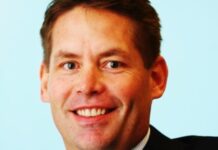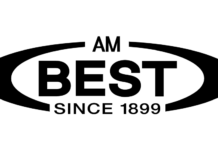KBRA has hit back at Fitch Ratings’ claims that private credit ratings are inaccurate, stating that the agency has damaged its reputation and integrity with its recent report.
The report, based on a retracted August 2024 publication from the National Association of Insurance Commissioners’ (NAIC) Capital Markets Bureau, argues that lenient private bond ratings are allowing US insurance companies to benefit from low credit risk and capital requirements.
NAIC withdrew its report in August 2024, stating: “This action has been taken as we evaluate how the information we provide to the public could be misconstrued or otherwise utilized in inappropriate ways.”
KBRA commented: “Fitch’s decision [to use the NAIC report] raises questions about the motivations behind reaffirming such claims. At best, it reflects a lack of due diligence – at worst, it suggests an affirmatively nefarious effort to fabricate a competitive narrative with no regard for accuracy.
“In either case, the outcome is troubling: in seeking relevance to increase its market share in private credit, Fitch appears to have undercut two foundational principles for any rating agency – integrity and analytical rigor.”
On these points, a Fitch Ratings spokesperson responded: “Fitch’s report was written based on NAIC data and reporting released not only in 2024, but studies published in 2022 reaching similar conclusions. If the NAIC provides new information, we will update our analysis.”
In the NAIC paper, analysts noted that in 2023, nearly all of the 109 securities that shifted to private letter ratings (PLRs) were given higher designations than NAIC’s Securities Valuation Office (SVO) assessed – on average, by 2.74 notches.
Discrepancies were sharper at smaller credit rating providers (CRPs) than their larger counterparts, averaging 3.01 and 1.9 notches respectively. The majority of private ratings come from these small CRPs, such as Egan Jones and Morningstar.
In 17 cases, designations by CRPs and the SVO were different enough to move the securities from high yield to investment grade categorisation.
“These rating disparities, some of which are significant, call into question the quality and comparability of PLRs, and they could have an adverse impact on capital requirements under the current risk-based capital framework,” the report warned.
As a consequence of the research, NAIC’s Capital Markets Bureau suggested that the current regulatory oversight of rating agencies is insufficient.
Known to the issuer and certain investors, NAIC has required insurance companies to submit PLRs for verification by the SVO since 2018 in an effort to improve transparency. These submissions must reflect publicly available information from the CRP.
Since 2022, rationale reports from companies have also been mandated, covering the transactions structure, methodology and an analytical review of the rating.
In December 2024, NAIC proposed that a broader due diligence framework for CRPs be introduced.
The use of PLRs by US insurers has drastically increased since 2019, with NAIC reporting an increase of 86% from 2019 (2,850) and 2023 (8,152). Between 2022 and 2023 alone, a 20% increase was recorded. Estimates at the time of writing suggested that this trend would continue for year-end 2024.
Since 2019, large CRPs have maintained their provision of approximately 1,000 privately rated securities, while the number produced by small CRPs has almost tripled. In public ratings, large CRPs dominate the space.
AM Best declined to comment on the reports. Moody’s and S&P Global Ratings could not be contacted for comment.
©Markets Media Europe 2025












